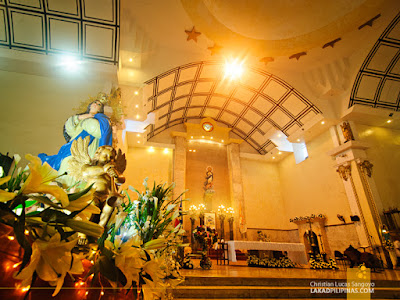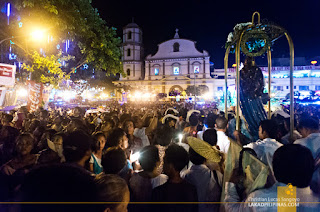Tapaz was founded in 1835 but it continued being a part of Dumalag for many years. In 1862 and 1863 two letters were made to declare parish under the patronage of St. Jerome. Both were signed by Governor General Lemery, but they were never executed. Finally, in 1874, Tapaz was declared an independent parish by Jaro Bishop Mariano Cuartero.
SIGMA was named after the town’s first executive datu, a powerful ruler named Datu Cayongyong Mahinay. The Datu, with the frequent recurrence of his normal cold illness and often blowing his nose, in dialect “naga-sikma” was popularly known among his followers and other “Datus” ruliing the neighboring regions as “Datu Sikma”. Hence, the town named Sigma from the word “Sikma”.
Sapian (sometimes spelled Sapi-an) is a fourth class municipality in the province of Capiz, Philippines. It belongs to the Second Congressional District of the Province of Capiz. At the 2010 census, Sapian has a total population of 24,779 people, predominantly Catholic.
Sapian Bay which is situated in the northern part of the municipality is geographically joined with Capiz Bay. The 30 km² Sapian and Capiz shallow sea bays has extensive intertidal mudflats, sandy beaches, mangrove swamps, estuaries of several small rivers, and associated coastal lagoons and marshes.
President Roxas was originally the small community of Lutod-Lutod, Barrio Aranguel in the old town of Pilar. Sitio Lutod-Lutod was a cogonal and shrubby area where a variety of trees, game birds and animals abound. Inhabitants in this area are minimal, “less than what your fingers could count” according to stories. During the heyday of sugar production in Visayas, it was discovered that the plains of Lutod-Lutod where very suitable for sugar cane plantation. In 1924, the first sugar mill was installed right at the side where the Central Azucarera de Pilar (now Capiz Sugar Central) now stands. Elizalde and Co. acquired the sugar mill which improved production and became one of the biggest sugarcane producers in the Philippines.
In 1853, the town Pontavedra was established at the present site of Barangay Sublangon. Formerly this town was a part of Panay, being the first settlement in the province of Capiz. Only in the year 1853 when General Crespo passed a decree making it independent town from Panay. Three years after, the town leaders decided to transfer the Poblacion to its present site because of the accessibility to the mouth of the big and navigable Agbalo river. The natives of the town call the place “Caguyuman”, a term descriptive of the place of ants or “ant hill”. This has been so because during that time the market days of the town attracted very large number of people from neighboring town and far away places. These people came to town like swarm of ants, on foot, bullcarts in bancas and sailboats. Hence the name was “Caguyuman” The name was changed to Pontevedra when the town has its own independent parish. That was 24 years later, after the town was established through the request of General Mariones. The request was granted two years after and Father Gregorio Hermida was the first Spanish Friar to take charge of the town parish. This Spanish Friar found the stiking resenblance of the town with that of his hometown in Pontevedra, spain. Henceforth through his influences the town was named PONTEVEDRA.
The coastal town sprang out from an Austronesian settlement in the early 16th century when indio natives managed to escape colonial tyranny from the Spaniards. The settlement was then known as Sibala, named after the river that ran through the coastal village. In 1570, however, the settlement was seized by Spanish colonial officials and the guardia civil took full control of the village. It later flourished into a bigger and prosperous town and was renamed after its designated patron saint La Nuestra Señora del Pilar (Our Lady of the Pillar). Several friars and missionaries were assigned to preach in the town since then until it later received its permanent parish priest.
The Panit-ananons inherent their genetic appearance from their Malay ancestors particularly from the brothers DALHOG and DANAO who were supposed to be the founders of the Municipality of Panitan in the year 1621.
Danao got married to Masiid and Dalhog to married Capanang. These family names are still present in the Municipality of Panitan, however not carried by their offspring but have turn into names of three sitios and a lagoon close to the Poblacion center.
The original settlement of Panitan is located at Sitio Capul-an, near the Danao Lake. It was merely behind the coming of the Spanish colonizers that the municipality center was then transferred to where it is currently located.
Panay or Pan-ay is a third class municipality in the province of Capiz, Philippines. According to the 2010 census, it has a population of 43,449 people.[3] It used to be the Capital of Capiz Province.
Pan-ay is the site of the famous coral-stone Sta. Monica Church, home to the largest Catholic Church bell in Asia. The bell was made from 70 sacks of gold and silver coins donated by the townsfolk. Measuring seven feet in diameter, five feet in height and weighing 10,400 kilograms or just over 10 metric tons, the Pan-ay bell is popular among tourists visiting Capiz.
The Spaniards began to colonize the Island of Panay sometime in 1615 after discovering a flourishing plain called “Tipic” which roughly mean “a part of the whole”. One day, as the story goes, the colonizers went around to see the place and passed by some women slicing white roots called “cayos”. The women were preparing the food for the coming lean months ( dried cayos serves as substitute for rice ). The Spaniards wanted to know the name of the place . Speaking in their own language asked “Como se Ilamo este pueblo?” The women did not understand what the strangers were saying. Thinking that the Spaniards were asking what they were doing, the women replied, ” Naga cuha busao,” which mean they were removing the poisonous juice from the root. How the Spaniards managed to translate the local dialect into Mambusao, of course is a matter of semantic error, but henceporth, they called the Mambusao.
As to the origin of the name of Maayon not much has been written about it, but folks speak of several versions and one among those considered most popular was when a group of Spanish soldiers while pursuing the insurrectus, discovered a settlement near the bank of the river. Finding the people to be hospitable and nice, they asked for the name of the place. Since the natives did not understand the Spanish language, they assumed that what the Spaniards were asking for what is the status of the harvest for them it was harvest time. The natives answered "Mango man". So the Spaniards named the settlement "El Pueblo de Maayo". Thus, the name Maayon was derived from that word and to this very day, it is known as such.Maayon first became a town during the early American era. However, during the Cadastral Survey, it was reverted to a barrio status under the Municipality of Pontevedra. For nearly half a century, the residents fought hard and long for its restoration to a separate and distinct entity. Their untiring efforts were empty rewarded when in 1995, Carmen Dinglasan Consing, representative of the first District of the Province of Capiz field House Bill No. 2098 in the lower chamber of Congress. Senator Justinano S. Montaño sponsored and steered the bill until its approval. Finally on March 30, 1955 President Ramon Magsaysay signed the bill re-creating the lot Municipality of Maayon, Capiz in a ceremony held in Malacañan.
The town of Jamindan has been under the rule of Spaniards for almost 3 centuries. The place got its name from a tree called "Hamindang" which grow abundantly in the community. This tree grows plentifully along the banks of the river during early days of history.
The Spanish government helped Ivisanon to have there own name for their village. It’s because ,the people who lived here long time ago has the principal livelihood of fishing, and every time they fish, they always told to their company that “let’s go and catch some ibis!”, this helped the Spaniards to established a name of “Ibisan” to the said village. But later on, the Spanish scholars have a preference of the letter “B” to “V”, they used to change the name “Ibisan” to “Ivisan” which was more convenient and agreed by the residents of the village and the Spanish government. This how the name of Ivisan started.
Dumarao is derive from a certain variety of rice called “ARAW” which is repeatedly planted each year, according to political and economic folk groups. This is a very old parish having been founded around the beginning of the 17th century.
The story, as told by the local folks and pass on to the generations, started when a group of Spanish colonizers passed by and inquired for the name of the place. A farmer who was then at the vicinity watching a pile of “palay” was approached and in their Spanish tongue asked for the name of the place. Without understanding a word they were saying the farmer replied…”Dumaan nga Araw Senior”, thinking that the Spaniards were asking the kind of rice being harvested. Thus “Dumaan nga Araw” was born and later shortened to only one word “Dumarao” and hence forth the town was called by that name… to the present day.
Dumalag one of the central towns of Capizprovince. The name Dumalag, came from the Bisayan word ” dalag” which mean yellow. Others claim, that the “dalag” came from the color of the Pan-ay river that cuts across the town which is used to turn yellow because of the leaves of the certain tree. Another term is also “dumalaga” or spring chicken which could have been in abundance in the area in early times.
Several years after the purchase of Madia-as (Panay) by Datu Puti from the Negrito Chief Marikudo, the Maly Chief Sumakwel, Bangkayawas assigned to rule the Aklan Valley, (now Capiz) and designated his followers to settle in some parts of the distant places following the course of river.
Tradition tells that one Barangay sailed down the river and stayed for some time in a place now called Gapason, while another sailed up the river. After a few days, yards away from its bank grew a big tree called “Dao”. The two heads of the Barangay later agreed to stay and built houses for their families.
Decades before the 6th century, before the spaniards came back to the Philippines, Cuartero was a dense forest inhabited by some tropical animals, bats, rodents and some man eating animals. As time went on, some members of the sumakwelan settlers happened to reach place using the river, now known as the panay river, as their means of passage. They began cutting down the big trees that paved the way for their homes. The early settlers established their settlements along the riverbanks. As other settlers came by the hundreds, the clearings were made wider. As the settlement expanded and widened, the settlers agreed to give a name to the place. The first name given was Binudhian, and then it was change to Mapang, after a creek. People from neighboring places came to settle in the place. After a while, the name was change again to Fonda, meaning founder. As years passed, the name of the place bacame CUARTERO, in honor of the Bishop of Jaro who inaugurated the church in 1890. It bacame an arabal of Dao sometime in 1973. All taxes, personal and real estate had to be paid in Dao Municipal Treasury.








